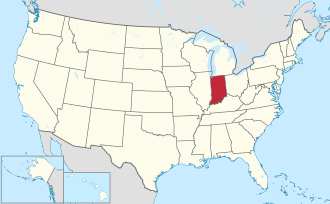Decatur County, Indiana | |
|---|---|
 Decatur County Courthouse in Greensburg | |
 Location within the U.S. state of Indiana | |
 Indiana's location within the U.S. | |
| Coordinates: 39°18′N85°30′W / 39.3°N 85.5°W | |
| Country | |
| State | |
| Founded | December 12, 1821 (authorized) 1822 (organized) |
| Named after | Stephen Decatur, Jr. |
| Seat | Greensburg |
| Largest city | Greensburg |
| Area | |
• Total | 373.32 sq mi (966.9 km2) |
| • Land | 372.57 sq mi (965.0 km2) |
| • Water | 0.76 sq mi (2.0 km2) 0.20% |
| Population (2020) | |
• Total | 26,472 |
• Estimate (2023) | 26,399 |
| • Density | 71.052/sq mi (27.433/km2) |
| Congressional district | 6th |
| Website | www |
| Indiana county number 16 | |
Decatur County is a county in the U.S. state of Indiana. As of the 2020 United States census, the population was 26,472. [1] The county seat (and only incorporated city) is Greensburg. [2]



